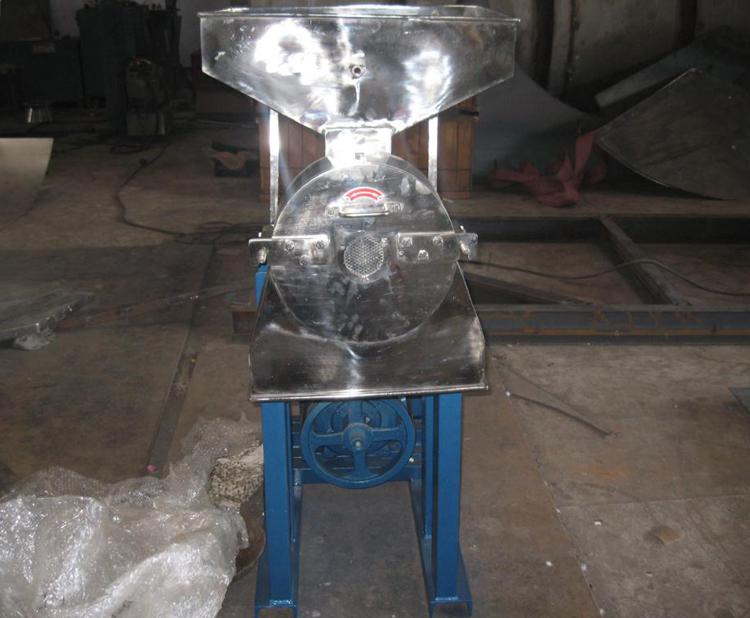Sugar Grinder – A Critical Machine for Fine Powder Processing in Food and Industrial Applications

A Sugar Grinder is an essential machine used in food processing plants and industrial facilities where refined sugar must be converted into fine powder for further production. Whether it’s bakery items, confectionery, chocolate processing, or pharmaceutical formulations, powdered sugar plays an important role in achieving the right texture, taste, and consistency. A high-quality grinding system ensures uniform particle size, minimal heat generation, and hygienic processing—all of which help improve the quality of the final product. As industries focus more on precision, efficiency, and hygiene, sugar grinding machines have become a vital part of modern manufacturing workflows.
Key Features, Benefits & Importance
A Sugar Grinder is more than just a crushing device; it is engineered to deliver controlled and consistent powder output. The most notable features include:
1. Fine and Uniform Powdering
The primary advantage of a Sugar Grinder is its ability to produce smooth, fine sugar powder that dissolves easily. This uniformity is important for confectionery coatings, bakery finishing, icing, and pharmaceutical mixing.
2. Hygienic Stainless-Steel Construction
Most industrial grinders are designed with SS304 or SS316 contact parts to maintain hygiene. Stainless steel ensures the machine does not contaminate the product and remains resistant to corrosion, moisture, and sugar dust.
3. High-Speed Grinding Mechanism
Advanced systems use high-speed rotors or hammer mills that break down sugar crystals quickly without overheating. This helps preserve the natural properties and prevents clumping.
4. Low Maintenance and Long Service Life
Industrial sugar grinding equipment is engineered to handle continuous operation with minimal downtime. Strong bearings, balanced rotors, and sturdy housings ensure long-term reliability.
5. Dust-Free Operation
Many systems include dust collectors or sealed grinding chambers to keep the workspace clean and reduce product wastage.
Use Cases and Applications
A Sugar Grinder is widely used across multiple industrial sectors. Because of its versatility and precision, it fits seamlessly into various production lines:
-
Confectionery Manufacturing: Essential for preparing sugar coatings, center fillings, and fine powders for sweets.
-
Bakery & Biscuit Plants: Used to produce icing sugar, fondant ingredients, and dusting powders.
-
Chocolate & Cocoa Processing: Helps in achieving a smoother mouthfeel by providing fine sugar particles during mixing.
-
Pharmaceutical Industry: Suitable for preparing sugar used in syrups, tablets, and medicinal powders.
-
Spice & Food Ingredient Plants: Often integrated with other grinding lines such as salt, starch, glucose powder, and specialty food ingredients.
-
Small and Large Manufacturing Units: Useful for both low-volume craft production and high-volume industrial operations.
These applications highlight how crucial sugar grinding equipment is for maintaining product consistency and meeting industrial-quality standards.
Why Choose a Sugar Grinder for Industrial Production?
Investing in a Sugar Grinder enhances overall processing quality and operational efficiency. Here’s why industries rely on such machines:
-
Improved Texture and Product Quality: Consistent particle size ensures smoother mixing, coating, and finishing.
-
Reduced Manual Work: Automation reduces labor dependency and streamlines the process.
-
Energy Efficiency: Modern grinders are designed to optimize power usage while delivering maximum output.
-
Customizable Output Sizes: Adjustable fineness allows industries to produce coarser or ultra-fine powders based on requirements.
-
Compatibility with Production Lines: Can be integrated with conveyors, feeders, mixers, and packaging systems for a seamless workflow.
-
Safe Handling of Materials: Closed systems minimize dust exposure and improve workplace safety.
These advantages make sugar grinding equipment an important part of modern industrial processing.
Conclusion
A Sugar Grinder is a fundamental machine for industries that depend on fine sugar powder to maintain the quality and consistency of their products. With its ability to produce uniform particles, maintain hygiene, and operate with high efficiency, the machine supports a wide range of industrial applications—from bakery and chocolate processing to pharmaceuticals and ingredient manufacturing. As production standards rise and industries demand greater precision, sugar grinding technology continues to evolve, offering higher output, better safety, and improved energy efficiency. Choosing the right grinder ensures long-term reliability and consistent product performance across all manufacturing processes.
FAQs
1. What is a Sugar Grinder used for?
A Sugar Grinder is used to convert crystalline sugar into fine powder for applications in bakery, confectionery, pharmaceuticals, and food ingredient processing.
2. What materials are Sugar Grinders made from?
Most industrial grinders are made using stainless steel (SS304 or SS316) for hygiene, durability, and corrosion resistance.
3. Can a Sugar Grinder produce different fineness levels?
Yes, the fineness can be adjusted depending on the machine design, allowing you to create coarse, fine, or ultra-fine sugar powder.
4. Is a Sugar Grinder suitable for continuous operation?
Industrial models are designed for continuous, high-volume grinding with low maintenance, making them ideal for large production units.
5. Does sugar grinding generate dust?
Modern grinders feature sealed chambers and dust-control systems that reduce airborne sugar dust, making the process cleaner and safer.
- AI
- Vitamins
- Health
- Admin/office jobs
- News
- Art
- Causes
- Crafts
- Dance
- Drinks
- Film
- Fitness
- Food
- Spiele
- Gardening
- Health
- Startseite
- Literature
- Music
- Networking
- Andere
- Party
- Religion
- Shopping
- Sports
- Theater
- Wellness


